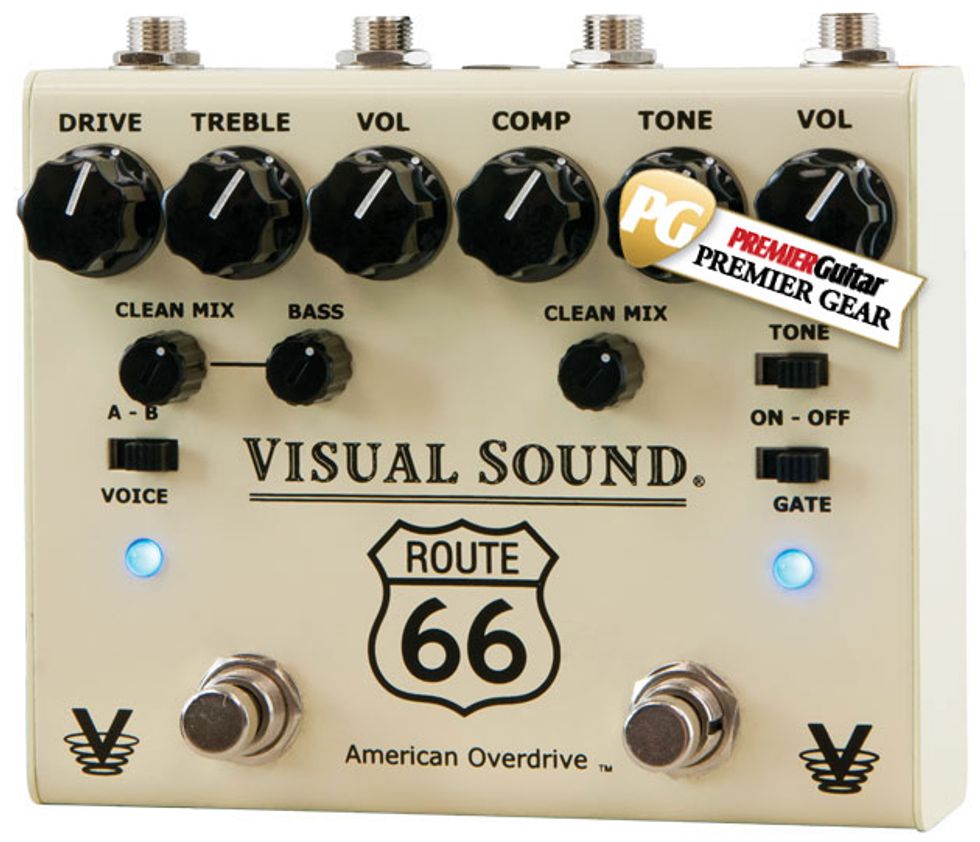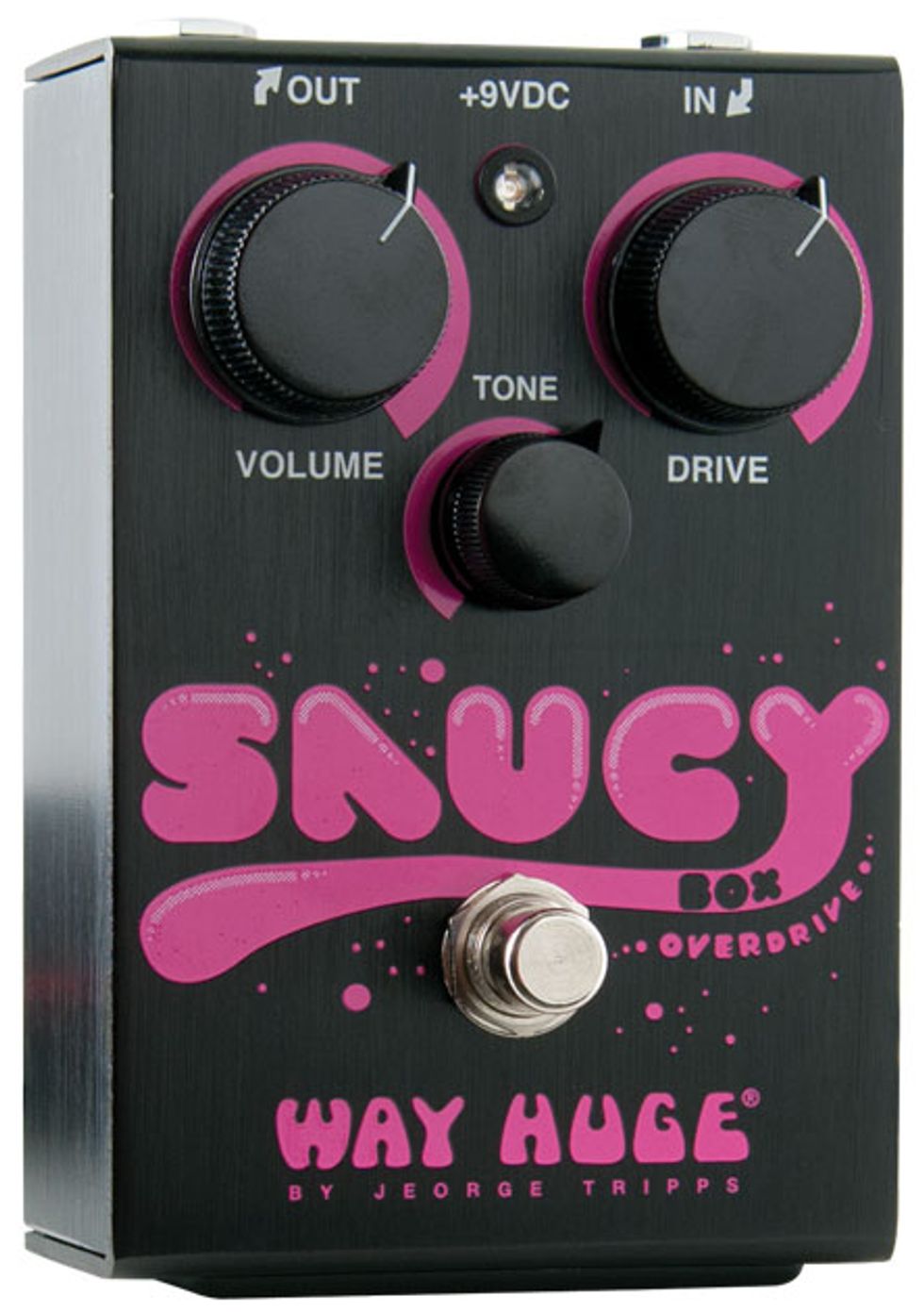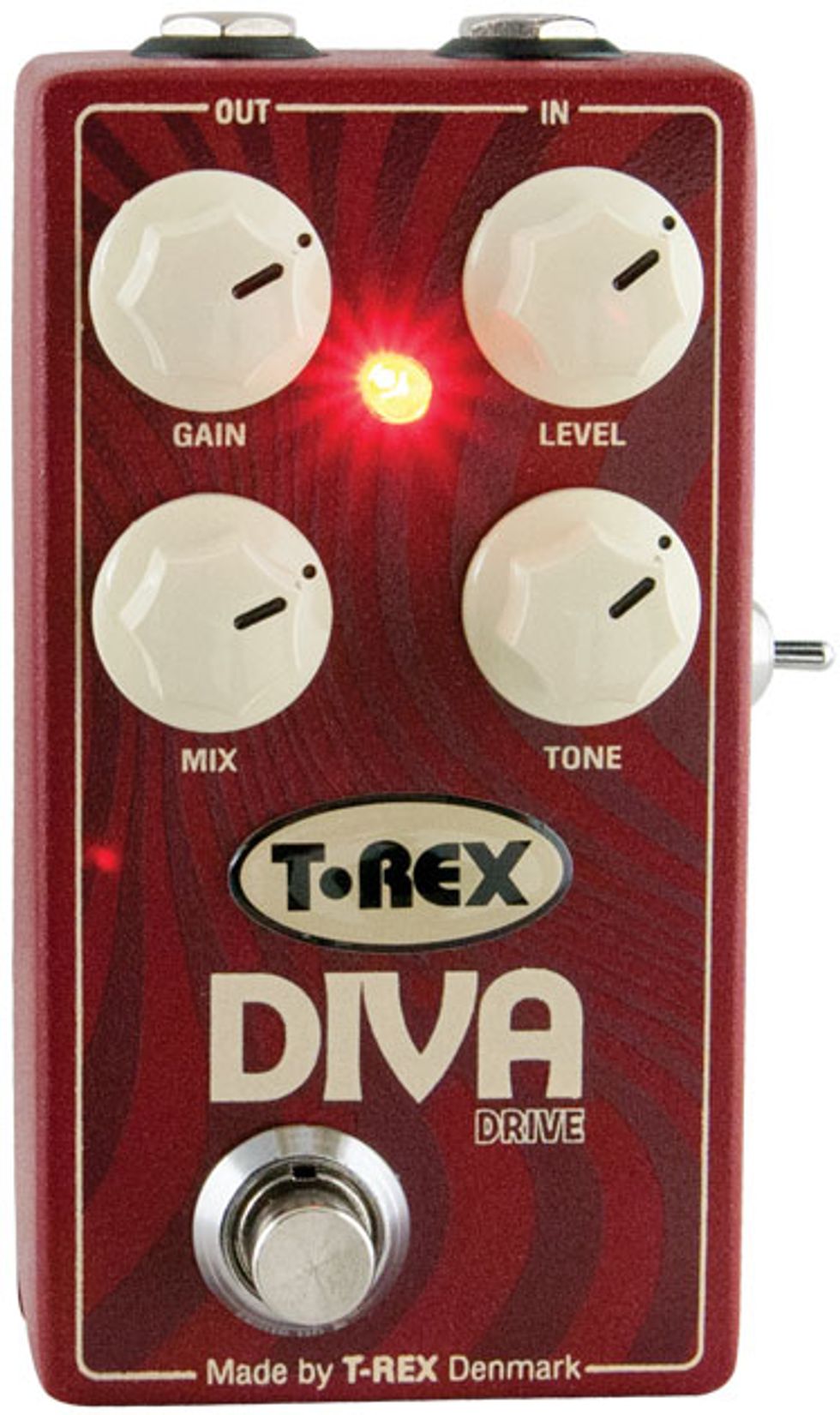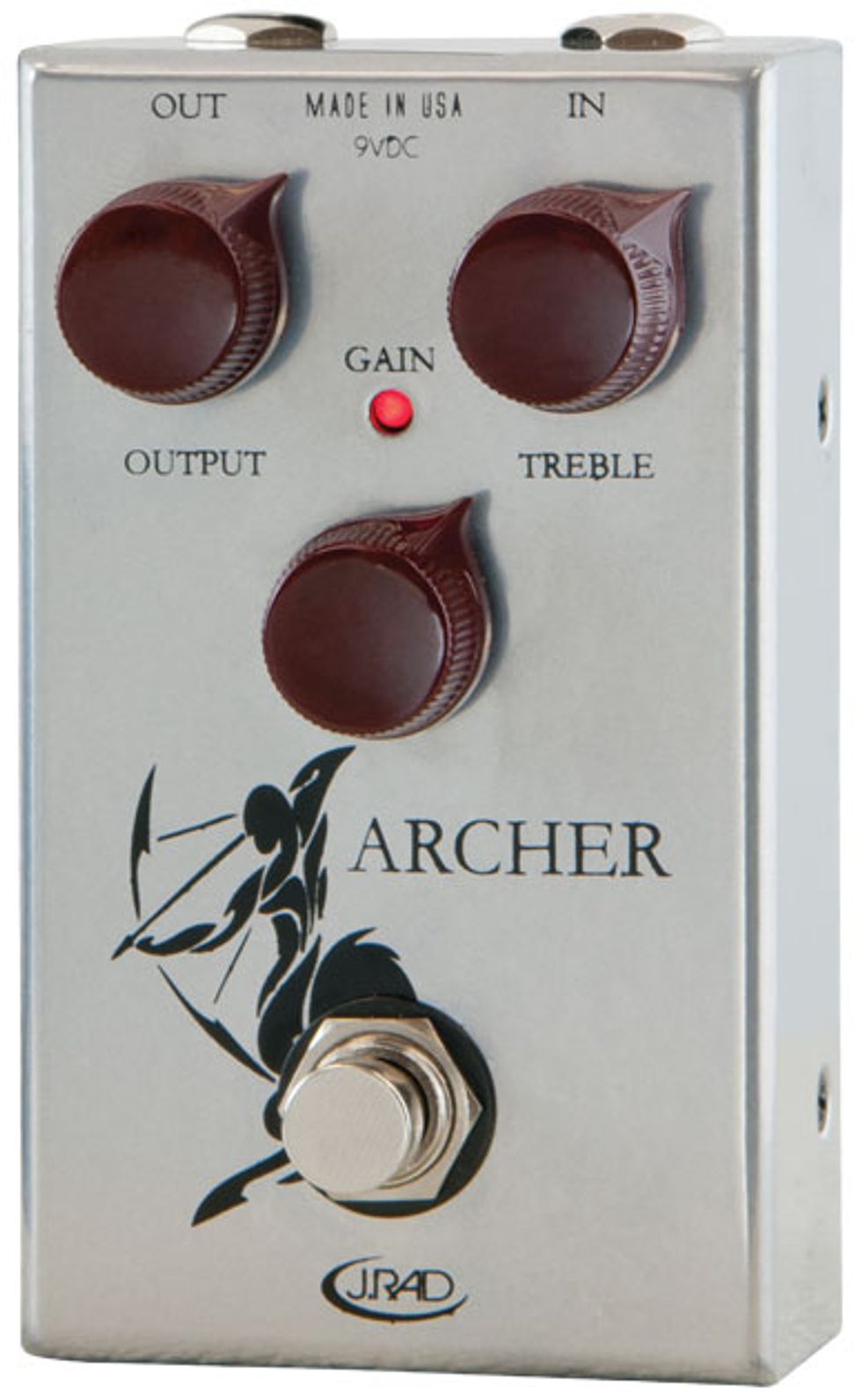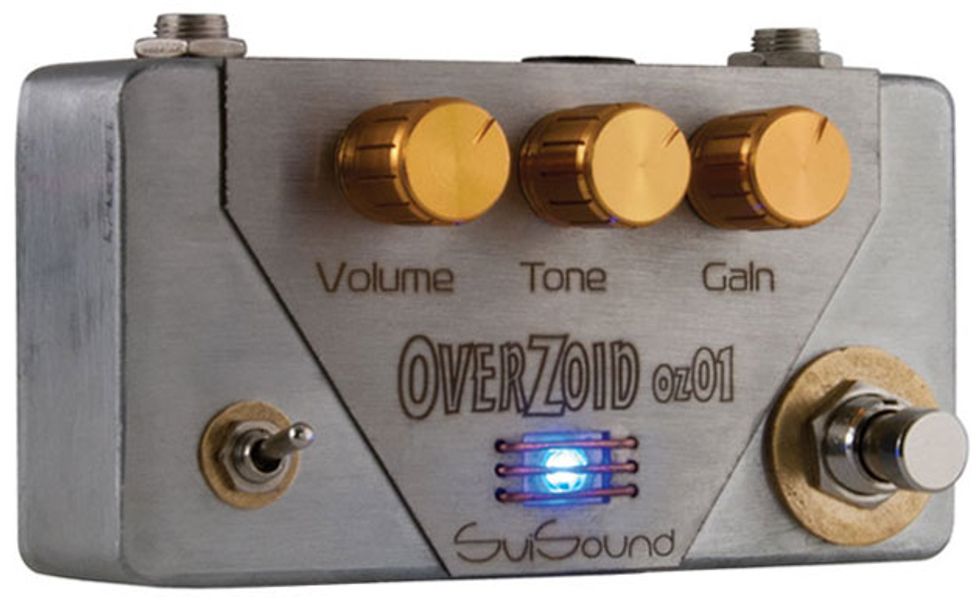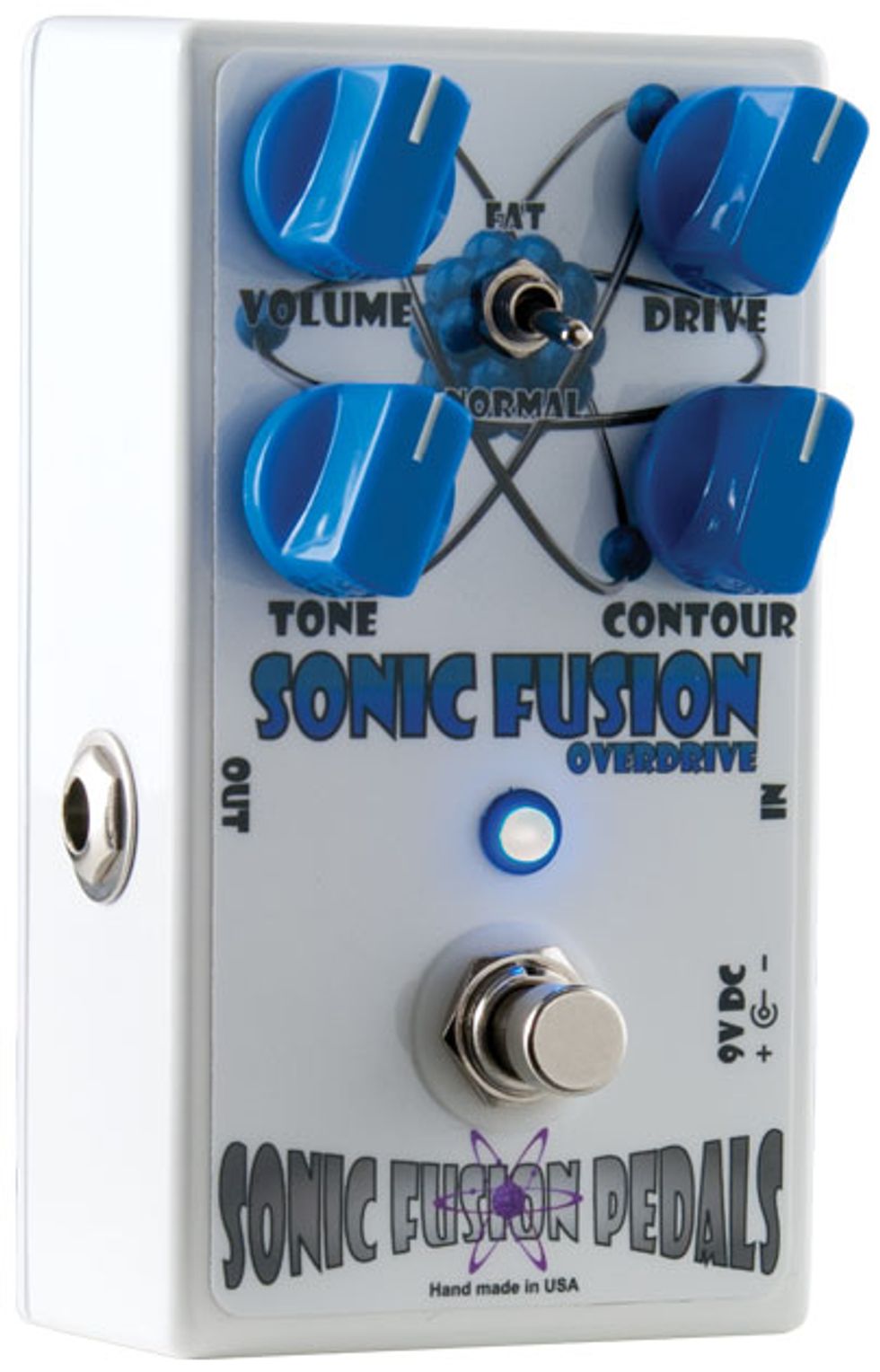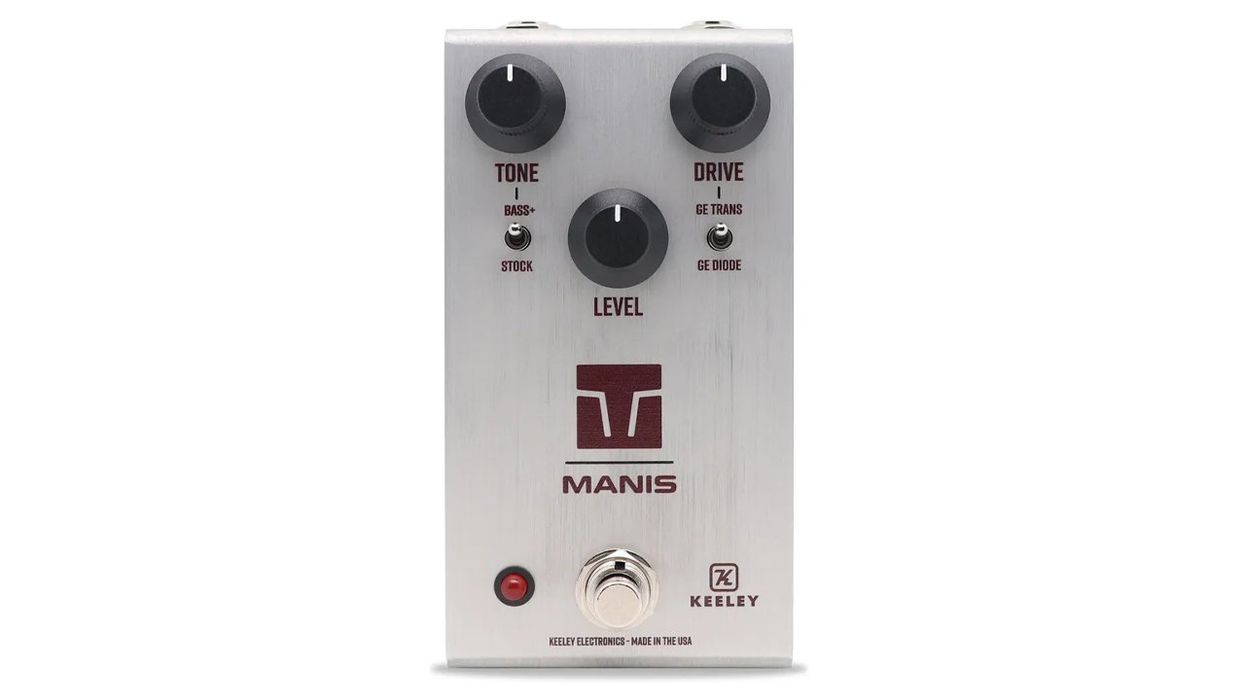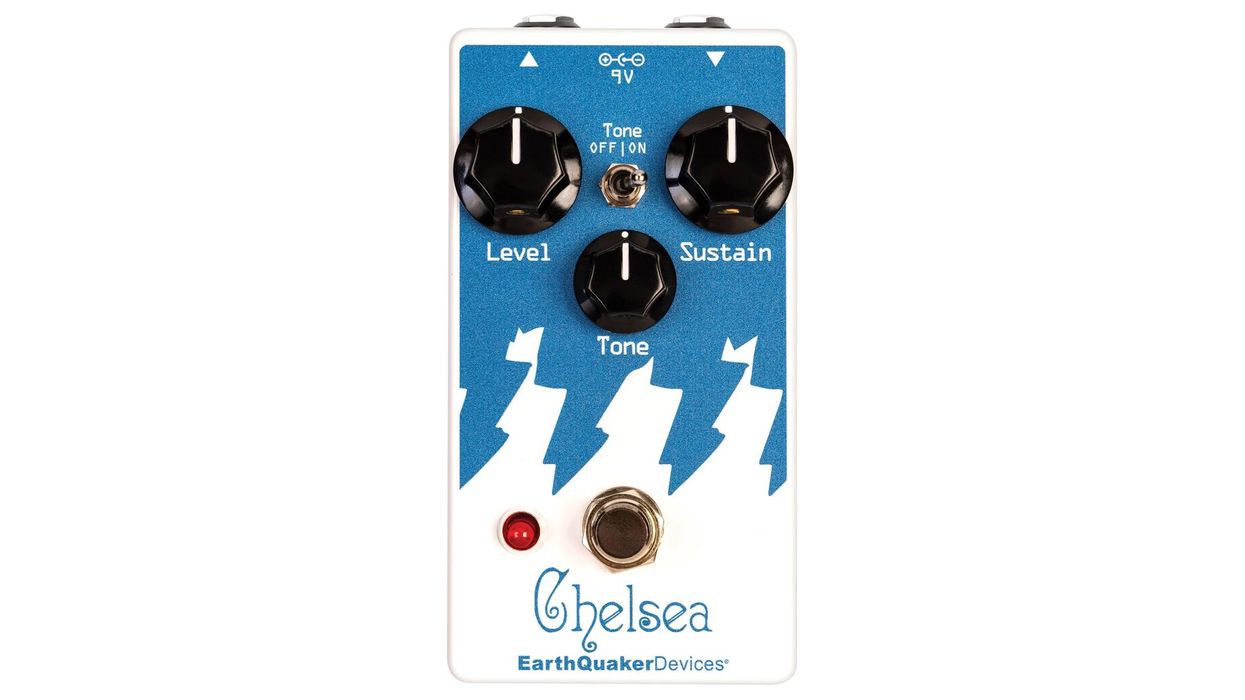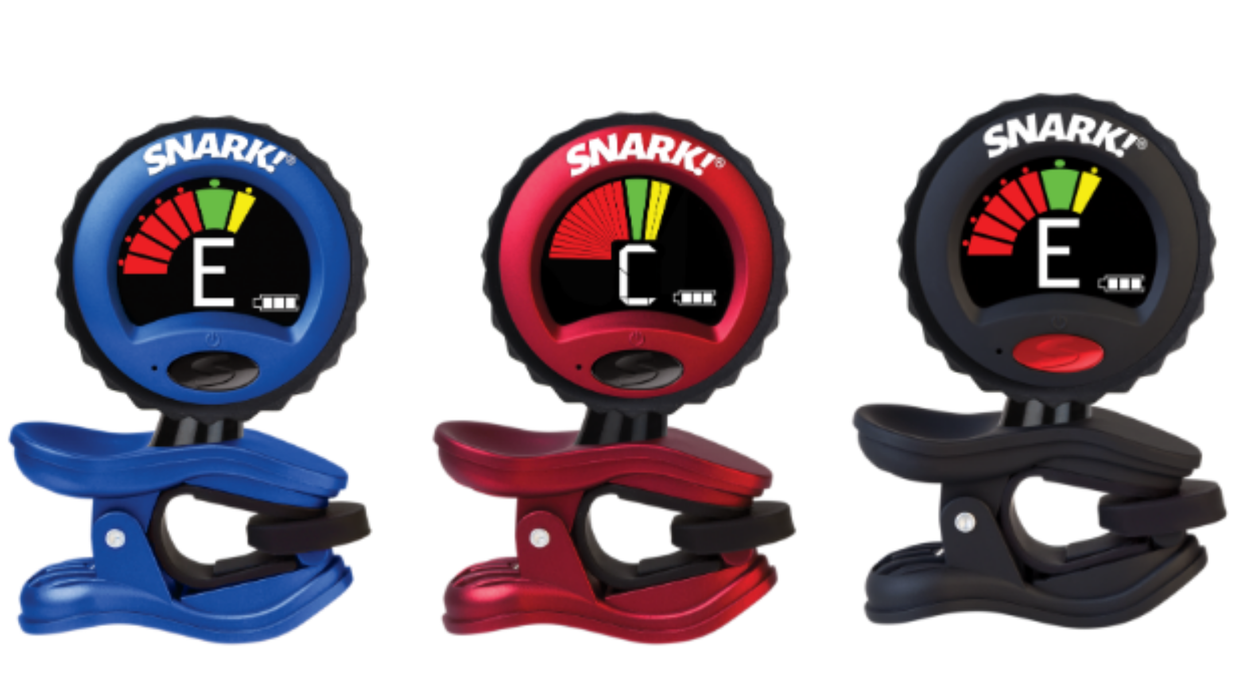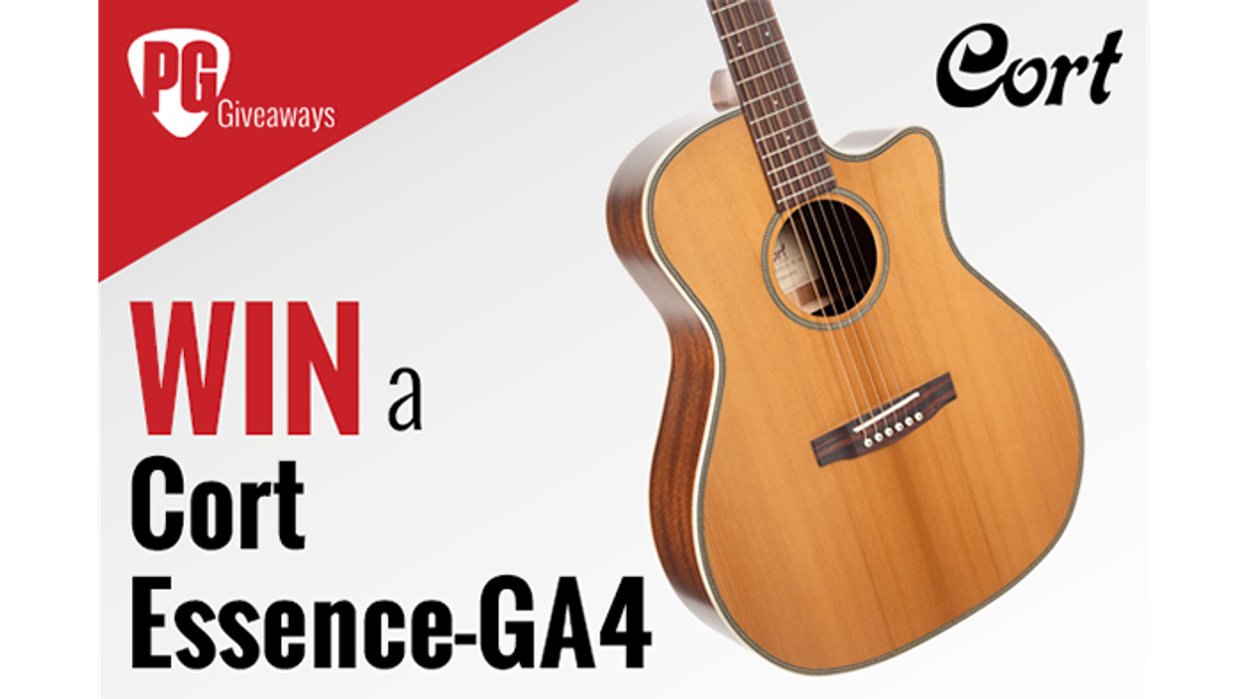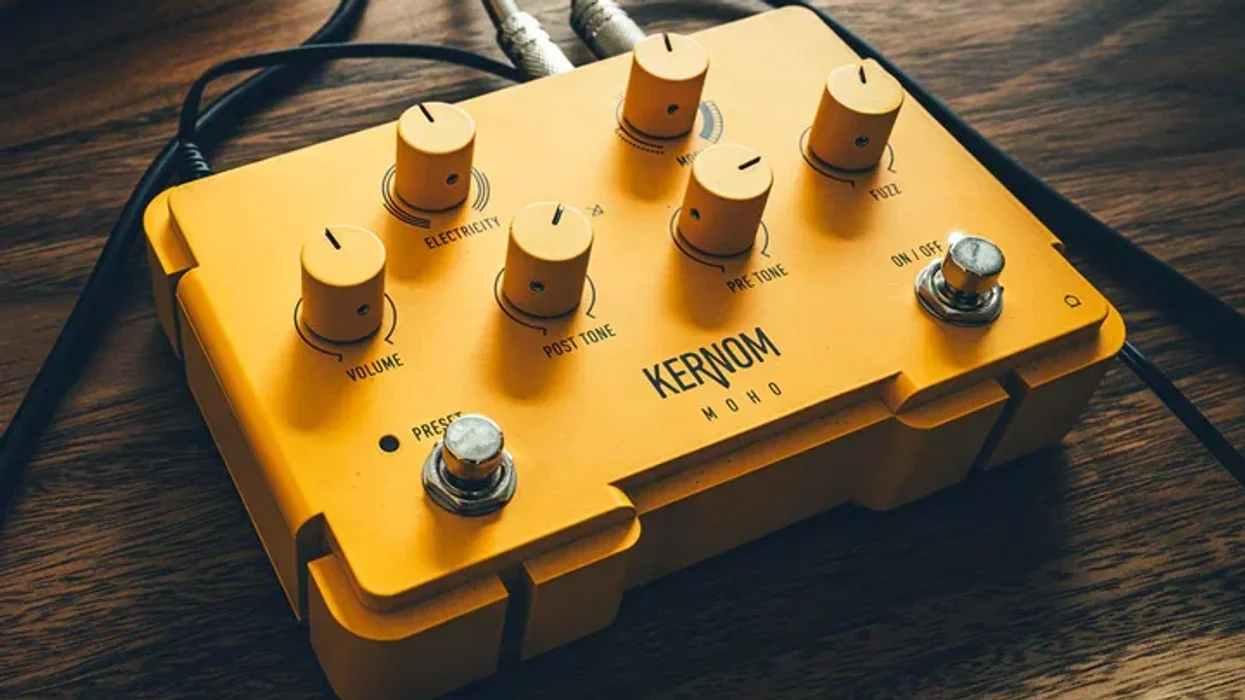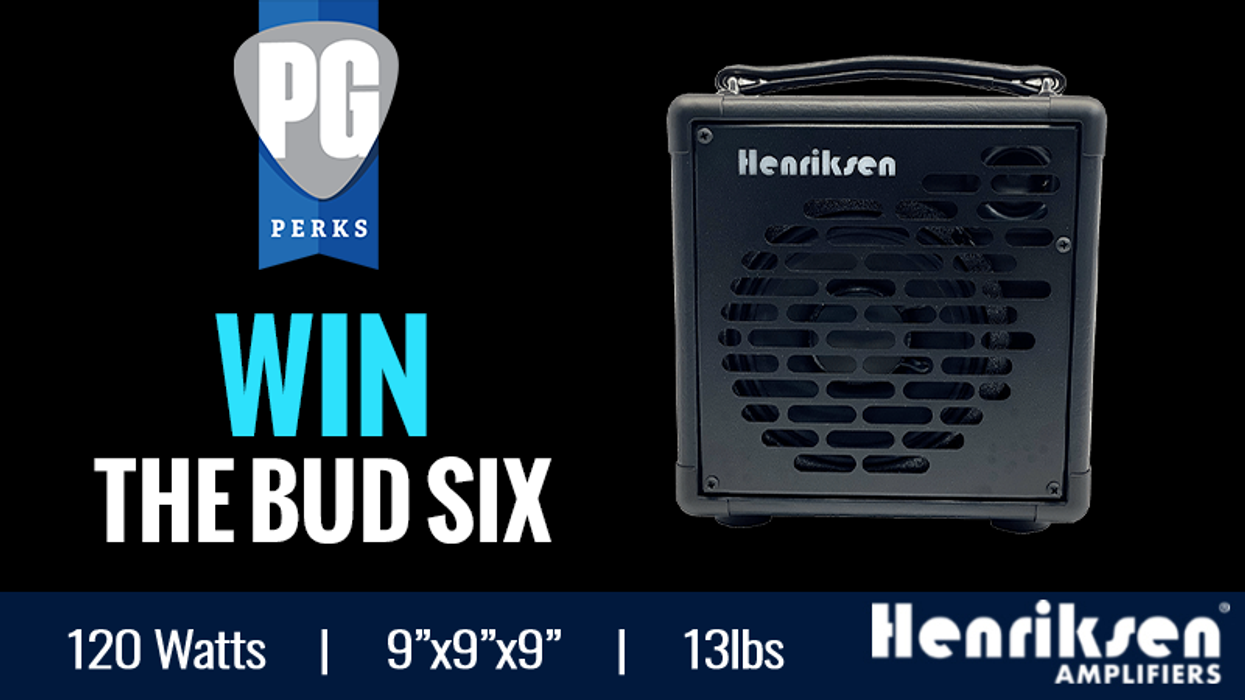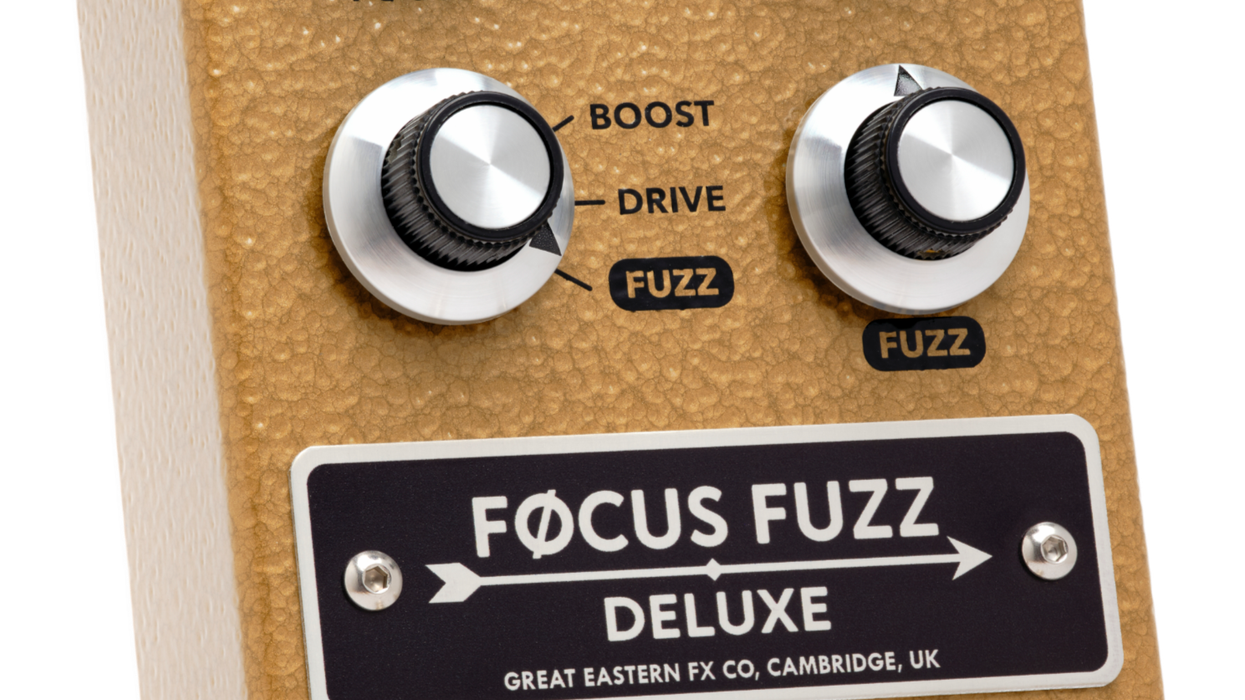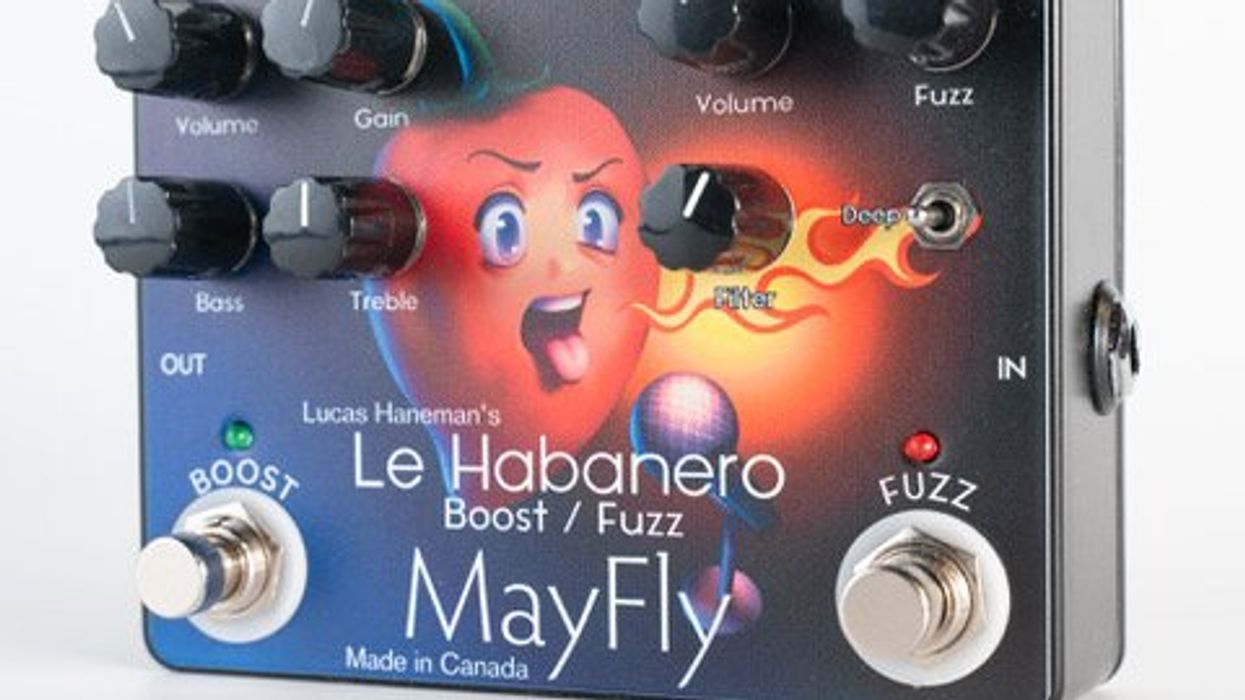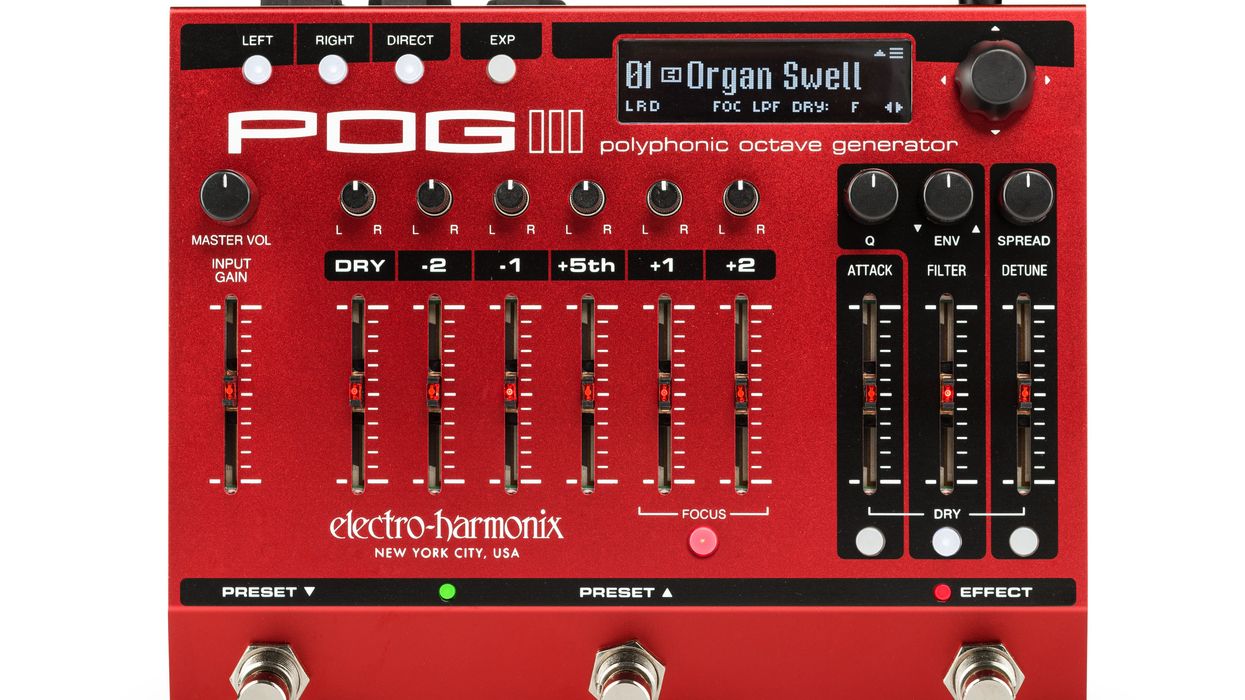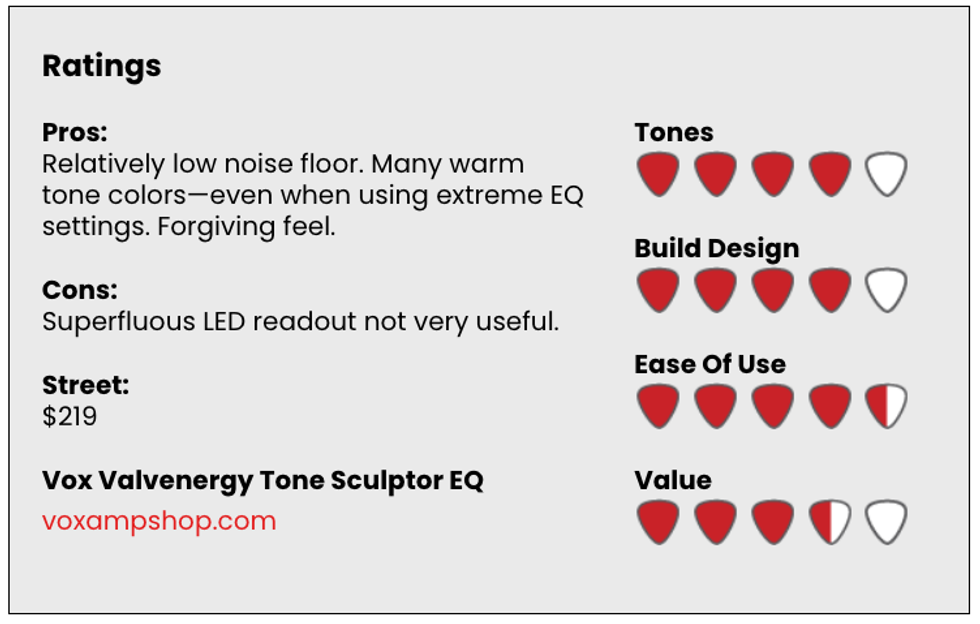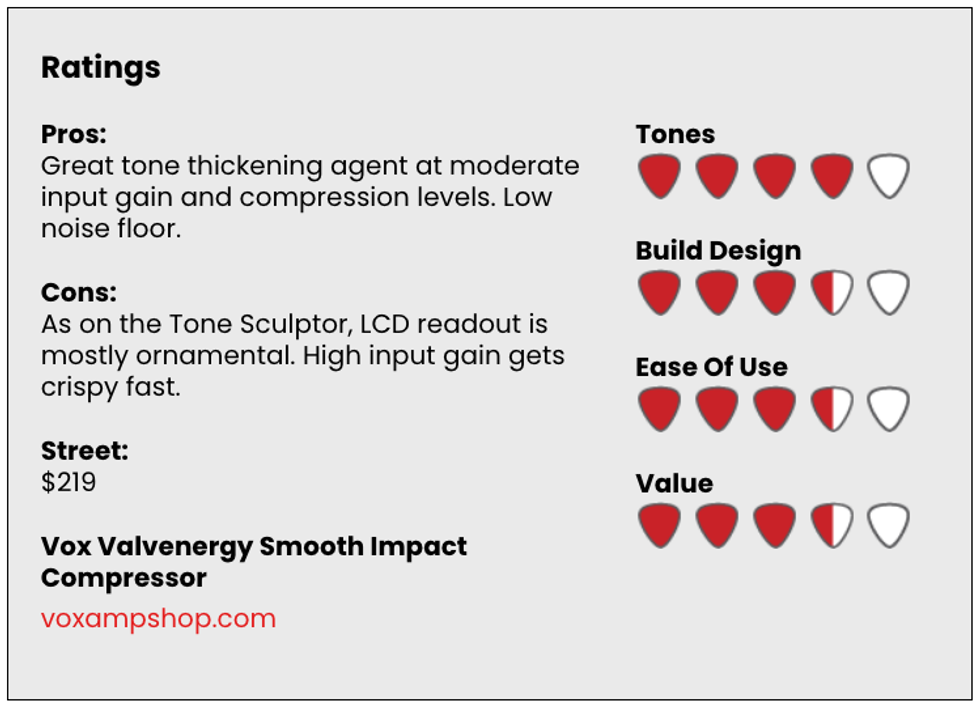To some players, overdrive is the most essential effect of all—a low-to-mid gain kick in the pants that can add pep to leads, juice up your jangle, and add that just-right dose of grit and crunch to power chords. Given their intrinsic utility, it's little surprise that there area lot of overdrives out there. So when it came to compile a sampler of new overdrives shouldering their way into the marketplace, we decided to explore the relative diversity of the overdrive ecosystem, rather than focus on a single type.
While such classics as the Ibanez TS series and the Klon Centaur remain benchmarks, milestones, and inspiration for many builders (the Archer in our roundup is a spot-on Klon klone), it's fascinating to see the ways designers have manipulated those circuits to deliver fresh sounding and sometimes more dynamic evolutions of those ancestral forms.
The pedals profiled here are a varied bunch. But whether you're looking for a range of clean boost and distortion timbres, or a specific gain and EQ profile that will make your guitar and amp sound their sweetest, at least one of these pedals can take you there. —Charles Saufley
Click through to read each review or pick the pedal you want to learn more about below:
Visual Sound Route 66 V3
Way Huge Saucy Box
T-Rex Diva
J. Rockett Audio Archer
SviSound OverZoid od01
Sonic Fusion Overdrive
Most two-in-one pedals combine overdrive/distortion with a boost stage, but the latest Route 66 from Visual Sound (who are in the process of changing their name to Truetone) goes further. Now in its third version, the pedal has become a feature-packed, two-headed monster that seems focused on squeezing as many tones as possible from a single box.
Ratings
Pros:
Flexible routing options. Switchable internal buffers. Great value.
Cons:
Treble control could be more effective.
Tones:
Ease of Use:
Build:
Value:
Street:
$179
Visual Sound Route 66
truetone.com
The Route 66 pairs a potent overdrive with a great-sounding compressor. The addition of separate inputs and outputs for each effect makes the Route 66 a true two-in-one. The ability to single out each effect and place other effects between them may be invaluable for players using programmable effect loopers.
The original Route 66 overdrive had Tube Screamer-esque roots (it used the 4558 op amp). But the latest version boasts a redesigned circuit based on the Drivetrain II that Visual Sound designed for Reverend. In addition to standard drive, treble, and volume controls, two mini knobs control clean mix and bass. Add in an A/B switch for different voicings, and you start to grasp how much tonal ground the Route 66 covers. (The A setting provides throaty midrange presence, while B is a bit more scooped.)
Honestly, it was difficult finding unusable dirt flavors with the Route 66. The single-coils in my MIM Strat acquired humbucker-style growl with added bass and gain. I transitioned easily from the dry, Texas punch of “Tush" to slightly compressed Larry Carlton-style tones that would suit a Steely Dan cover band. The only thing I took issue with was the sweep of the treble control. I found the overall range a bit subtle and thought it could use a more dynamic top end.
The Route 66 isn't a completely transparent compressor—think of an old Ross or MXR Dyna Comp—but it can achieve subtlety via its mix knob. The compressor circuit didn't get as drastic an overhaul as the overdrive, though it's acquired a mix control and a switchable noise gate. At stage volume the Route 66 was comfortably quiet. It made my Deluxe's clean tone blossom with beautifully warm high end. The magic of the original Route 66 was how well the two effects worked together, and this reboot somehow improves on that.
The Verdict Visual Sound has packed two greats stomps into one box. The compressor can move from country-spank squish to singing sustain, while the overdrive can satisfy both Screamer addicts and classic-rock mavens. At roughly $90 per effect, the Route 66 is a contender for the bang-for-buck championship belt.—Jason Shadrick
Watch the Review Demo:
Overdrives are old hat for Way Huge. The super-simple Red Llama and the hyper-tunable Pork Loin are both considered modern classics in some camps. And the new Jeorge Tripps-designed Saucy Box, in some ways, seems designed to inhabit a world between those two pedals. It's simple, but can also move with grace and menace between near-clean boost tones and the upper reaches of the medium gain spectrum.
Split Personality
Like the Pork Loin and a lot of other overdrives, the Saucy Box's overdrive tone is the product of output from discreet clean and overdriven signals. But where boxes like the Pork Loin enable adjustment of the wet/dry mix, in the Saucy Box the ratio is fixed. This means slightly less flexibility for compulsive micro-tweakers. For everyone else it means a nicely balanced and relatively transparent fundamental voice that you can dirty up with a single knob.
Ratings
Pros:
Happily ranges from clean to filthy.
Cons:
High-end can be hard to tame with bright amps.
Tones:
Ease of Use:
Build:
Value:
Street:
$129
Way Huge Saucy Box
jimdunlop.com
Classy, Trashy, and Little Thrashy
The Saucy's circuit works a lot like that of the Klon, and like that pedal, it will excite harmonics and add heat at low gain levels without coloring your guitar's voice excessively. These near-clean, low-gain levels are among the Saucy's sweet spots, and here it'll do a beautiful job of thickening flimsy-sounding single-coils or putting extra mass behind a low-output amplifier—killer stuff for muscular but jangly power pop.
Even at low-gain settings, the tone control can come at you pretty hot. Using a blackface Fender Tremolux (outfitted with pretty bright 75-watt Eminence Red Coats), I found myself rolling the Saucy's tone back to the lower third of its range, though I could add a little extra top end with humbuckers.
Nudging all the controls toward noon is a ticket to beautifully raunchy chords and slightly sizzling lead tones (the neck pickup on my Stratocaster loved this setting.) But some of the greatest revelations are what happens at the highest drive settings—especially when you crank the volume and tone along with it. Here the pedal isn't just hot and responsive to pick attack and dynamics, but brash and fiendishly skanky—a perfect recipe for fast and thrashy Black Flag riffage, but also ideal for Clapton's Cream '67 timbres when you back the guitar tone down to nil. At these extremes the Saucy Box has a near fuzz-like aggressiveness with less compression and sizzle and a much more dynamic touch. It's fantastic for stacking a really searing lead tone on top of a wide-open amp, and stays sweet when you back off the guitar volume just a touch.
The Verdict
The Saucy Box may be simple, but it speaks in voices from subdued and singing to rambunctious. If you don't often have to switch quickly between radically different gain levels or require over-the-top fuzz or distortion textures, the Saucy box could end up covering most of your gain needs.—Charles Saufley
Watch the Review Demo:
Unless you've been off-planet for a while, you'll know Tube Screamer derivatives are popular stuff. T-Rex's Diva, though, is a Screamer with enough twists to make you forget it's TS-inspired. It's dynamic, multi-voiced, and twitchingly alive, and one of the more satisfying TS-style stomps we've played in a while.
Screaming Heart
The Diva's guts are built around the 4558 op-amp that drives most TS-style designs. It sits prominently on the PC board, though the board itself could be a bit tidier. I saw several traces of errantly applied solder sealer—not what you expect from an overdrive pedal just under 200 bucks. In general, though the Diva feels sturdy and sound.
Ratings
Pros:
Harmonically rich and dynamic. Adds heft to tone without clutter.
Cons:
Build could be tidier on a pedal this expensive.
Tones:
Playability/Ease of Use:
Build/Design:
Value:
Street:
$199
T-Rex Diva
t-rex-effects.com
The control set differs from a simple TS circuit in two important respects: There's a voicing switch incorporating low- and mid-boost settings, and there's a mix control that blends clean and overdriven signals. Together, they considerably expand the Diva's tone potential.
Brighter Boost
The Diva doesn't add much color at low-gain settings, but you do hear a deliciously rich, almost silky growl. Leaving the mix knob at 50/50 gave my blackface Tremolux heft, presence, and a hot harmonic glow in EQ regions that sometimes sound scooped and lifeless. The Diva is addictive in these near-clean boost applications—a sort of musical roux that thickens and unites disparate sonic flavors. The complex, biting qualities of the Diva at low-gain settings also make it a natural partner for fuzz. Put in on either side of a squishy, scooped fuzz like a Big Muff or Shin-Ei FY2, it adds definition, punch, presence, and pick sensitivity that is transformative.
The Diva is just as thrilling at higher gain settings. With the gain at noon (and enhanced with liberally applied doses of volume boost), the Diva makes a guitar feel alive and explosive under the fingers. TS-style circuits can feel less dynamic, but the compression from the Diva tends to sound and feel just right. Note-to-note definition and picking response is excellent—particularly when you dial in the very effective tone knob just right. It's a very rangy control, and at high levels it can even be a little too hot and sizzly for bright Fender amps or Marshalls.
The voicing switch adds even more flexibility. The fat switch was a perfect match for my Fender-based tone equation. And the extra mass it lent to single-coils mated to a Marshall made the amp feel wrecking-ball dangerous. The mid-boost voice could get spiky, but it sounded fantastic with squishy tweed-style circuits.
The Verdict
At it's best, the Diva is a sort of sonic secret sauce and a splash of Tabasco all in one—adding sass, spice, and a delicious harmonic fattiness to dull tones.—Charles Saufley
Watch the Review Demo:
The Archer overdrive from J. Rockett Audio Designs isn't exactly subtle about the fact that it's a Klon Centaur clone—witness the distinctive oxblood-colored pointer knobs, weapon-wielding mascot, and identical controls. But the Archer is one-third the size of an original, and at $179, far cheaper.
Ratings
Pros:
Dead-accurate Klon clone. Hefty construction.
Cons:
For better or worse, it's a clone.
Tones:
Ease of Use:
Build:
Value:
Street:
$179
J. Rockett Audio Designs Archer
rockettpedals.com
Klon Theory
Hype aside, Bill Finnegan's Centaur truly was a big deal when it debuted in the '90s. To many ears—mine included—it offered a vast sonic upgrade over Screamer-style overdrives, with greater headroom and sparkle and a more practical tone circuit. Thanks to a clever double-ganged gain control, it provided fiery overdrive in the knob's upper range, but a pristine clean boost at minimum settings. It was also beautifully made, with a memorable color scheme and a cool, custom-cast enclosure. It was a godsend for players who found previous IC-based overdrives such as the Screamer too compressed and midrange-bloated.
Original Klons are now valued in the two-grand range, so the pedal market has been awash in “Klones," some of which sound great. But of the half-dozen I've tried, the Archer is easily the most accurate. I auditioned it side by side with original Klon #309, which I've used on and off for nearly two decades. How close are they? Ridiculously so. The pot tapers vary slightly between the two pedals, so the knobs must be set slightly differently to create matching sounds, but there were no Klon tones I couldn't duplicate with the Archer. Could I pass a blind listening test? Absolutely not.
It's a well-built pedal, too. The pots, jacks, and footswitch are board-mounted, but the circuit board's secure mounting within the hefty folded-steel enclosure makes it difficult to imagine board damage via conventional use. The board includes many small, surface-mount components, unlike the hand-wired original, suggesting that, at least in this circuit, size doesn't matter. And while the original relies on a 1/8" power jack, the Archer employs a common barrel-type connector.
The Verdict
There are cheaper alternatives, notably the EHX Soul Food, which sells for well under half the price of the Archer (and sounds darn good). But the Archer is the more accurate Klone, and it boasts heftier construction. It's been many years since the Klon and its clones were the only ways to obtain “improved Screamer" overdrive sounds, but the circuit still sounds superb—and you may never encounter a more accurate replica.—Joe Gore
Watch the Review Demo:
The explosive growth of the stompbox business doesn't always translate into originality—especially where overdrive is concerned. However, the Overdrive oz01, from the workshop of Bulgarian manufacturer SviSound, is unique both in terms of looks and its killer combination of transparent and driven tones.
Ratings
Pros:
Transparent, hi-fi overdrive sounds in a unique enclosure. Small footprint. Affordable.
Cons:
Handmade enclosure shows a few quality control issues. Cannot use a battery.
Tones:
Ease of Use:
Build:
Value:
Street:
$165
SviSound Overdrive OverZoid oz01
svisound.com
Svi-Fi
It's easy to see the care that went into the oz01. The pedal's artfully designed enclosure bristles with playful details and tactile delights. The LED that peeks out from behind copper staples, the gold knobs, and the labeling all communicate a Jules Verne sci-fi aesthetic. And the thoughtful design touches make the pedal feel a little more custom and upmarket. The only real potential design drawback is the lateral orientation of the pedal's controls along the box's length, which may fit some pedalboards less well.
Sonic Thermal Detonator
OverZoid oz01 is a powerful overdrive. At super-low gain levels, it adds a very natural-sounding bite. Even higher gain levels don't add too much extra color to your amp output. In fact, the OverZoid tends to have a very high-fidelity feel, and at times seems to work like a magnifying glass for your guitar-and-amp tone.
The OverZoid has an individual voice too. Unlike a lot of classic overdrives that boost midrange without much finesse, it provides a very musical low end that adds drive and beefs things up without making them sound flabby. These low-end capabilities are enhanced with a bass boost switch—which lends extra heaviness when single coils or a bright amplifier are in the mix. It's hard not to be struck by how dynamic the pedal feels in the bass-heavy application. Part of that is the very effective tone knob, which works exceptionally well with the bass boost. You can dial in a lot of presence and sparkle without creating a traffic jam of mids and lows. And the way the two controls seem to work interactively and independently of each other is one of the OverZoid's real strengths.
The Verdict
Relatively transparent, hi-fi overdrives are a joy to work with—especially when they have the range to add a unique color or two on top of it. Given all that sonic range and style, the OverZoid oz01 a true standout.—David Von Bader
Watch the Review Demo:
Few guitarists have hands-on experience with über-rare Dumble amplifiers. That said, there are certain sonic characteristics—smooth saturation and compression especially—that we associate with Dumbles. The Sonic Fusion Overdrive does these things, and a number of other useful sounds, very well.
Ratings
Pros:
Strong Dumble-inspired sounds. Extremely versatile tone controls.
Cons:
None.
Tones:
Ease of Use:
Build:
Value:
Street:
$149
Sonic Fusion Pedals Sonic Fusion Overdrive
sonicfusionpedals.com
Smooth Operator
The Sonic Fusion does its Dumble trick best when mated to a high-headroom amp that's just at the edge of breakup. There, the pedal applies a metallic edge to the pick attack that makes linear runs more articulate and gives chords extra punch. It feels very amp-like too, with plenty of harmonic complexity and body.
There's enough gain in the tank to effectively blur the line between overdrive and full-fledged distortion, which makes the Sonic Fusion feel exceptionally dynamic. Response to changes in picking attack and adjustments to the guitar's volume control are all very amp-like as well.
The tone knob offers a lot of sonic range that goes from muffled and fuzzy to an exaggerated bright sizzle. The pedal's contour knob is a powerful control that transforms higher-gain sounds from tight and compressed to glassy and open, and helps add or subtract some of the Dumble-esque smoothness as needed. There's also a bass boost that calls up additional bottom-end thump and roundness without being overbearing or drastically changing the pedal's fundamental voice. These three controls give the Sonic Fusion Overdrive uncommon tone-sculpting power.
The Sonic Fusion Overdrive has more tricks under the hood. Inserted between a Gibson Les Paul Junior and a Matamp GT40 driving a 4x12 cab, the pedal delivered Marshall-flavored tones reminiscent of a cranked JMP with less upper midrange honk and a bit less bite. It also energized lead tones with top-end sparkle and extra sustain. And while you'll sometimes hear a low-mid bump in these settings, the pedal doesn't rob your guitar and amp of their respective personalities.
The Verdict
The Sonic Fusion Overdrive delivers on promises of Dumble-style tones, but it brings much more to the table—especially when you consider the delicious medium-gain Brit-flavored sounds. Refined and functional, it could be a go-to overdrive for anyone looking beyond the typical overdrive tones. It's well built, and at $149 bucks, it punches well above its price class.—David Von Bader
Watch the Review Demo:

